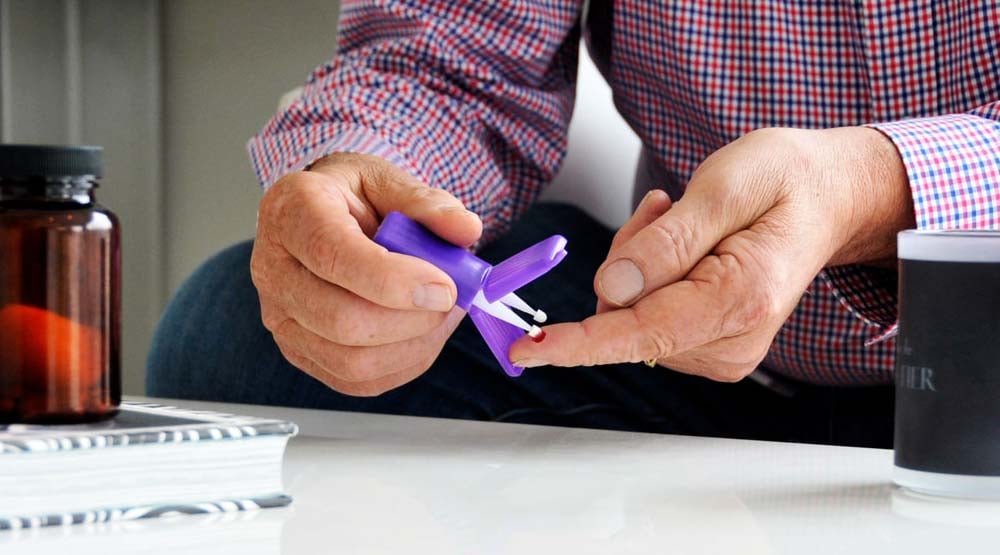Share this
Decentralized Clinical Trials Deliver Benefits, Study Shows
by Neoteryx Microsampling on August 18,2022
August 2022 — According to a study from Tufts University, a transition from onsite centralized trials to decentralized clinical trials (DCTs) could significantly improve the drug development process, which is known to be incredibly expensive and very risky, with high failure rates. In an article for Clinical Leader outlining the findings of the Tufts study, CL Chief Editor Ed Miseta reported that researchers at The Tufts Center for the Study of Drug Development (CSDD) estimated that the total cost to develop, trial and launch a new approved drug compound is roughly $2.6 billion.
Reducing Clinical Trial Costs by Using Mobile and Remote Technologies
 As a solution for saving time and money in drug development, key opinion leaders have long proposed switching to decentralized clinical trials. They have argued that trials using mobile or remote technologies that enable study volunteers to participate from home would be more "patient centric" and also would cut costs. However, a major stumbling block has been demonstrating in quantifiable dollar amounts the actual savings and other benefits of DCTs that use mobile or remote technologies. "Until now," states Miseta in his article.
As a solution for saving time and money in drug development, key opinion leaders have long proposed switching to decentralized clinical trials. They have argued that trials using mobile or remote technologies that enable study volunteers to participate from home would be more "patient centric" and also would cut costs. However, a major stumbling block has been demonstrating in quantifiable dollar amounts the actual savings and other benefits of DCTs that use mobile or remote technologies. "Until now," states Miseta in his article.
Tufts University Drug Development Report
The Tufts research was supported by Medable, and the resulting report was authored by Dr. Pamela Tenaerts, chief science officer for Medable. The report is titled "Financial Modeling from Tufts Center for the Study of Drug Development Demonstrates Substantial Net Benefits to Sponsors Who Use Decentralized Clinical Trials (DCTs) Technology." Miseta explains that the goal of the study was to produce a data-driven analysis of the "value proposition and return on investment for DCTs using an expected net present value (eNPV) model."
The eNPV measurement integrates cost, time, revenue, and risk into a summary metric for decision making that looks at all cash flows, including outflows from expenses and inflows from commercialization revenues. Trial managers can use the eNPV to develop a lifecycle chart that shows the costs and expenses that supported R&D and the revenues from commercialization. Using this model generates data that is risk-adjusted for the probability of success or failure.
Shorter Development Time, Reduced Failure Rates
Previous studies have shown that 85% of all clinical trials experience some sort of delay, and those delays can cost drug developers between $600,000 and $8 million per day. The Tufts research showed that by using decentralized technologies such as remote and/or wearable devices and mobile apps trials can have shorter development cycle times. Cycle time reductions can translate to more rapid trial completion.
 In fact, the Clinical Leader article states that time reductions associated with "DCT deployments" had a greater impact on net financial benefits than any other factor. The research showed that Phase 3 studies conducted with wearable or remote devices and mobile apps had a mean study initiation cycle time of 153 days versus 167 days for studies that didn't use those technologies. Further, Phase 3 trials using the wearable or remote devices and apps decreased their total trial duration by 360 days.
In fact, the Clinical Leader article states that time reductions associated with "DCT deployments" had a greater impact on net financial benefits than any other factor. The research showed that Phase 3 studies conducted with wearable or remote devices and mobile apps had a mean study initiation cycle time of 153 days versus 167 days for studies that didn't use those technologies. Further, Phase 3 trials using the wearable or remote devices and apps decreased their total trial duration by 360 days.
According to Miseta, Tufts found that 80% of respondents who invested in DCT technologies reported time savings during site initiation through activation. Respondents who provided trial subjects with wearable or remote technologies also reported improvements in trial retention. Their screen failure rates in Phase 3 trials decreased by approximately 10%, while dropout rates decreased from 28.6% to 26.1%.
Amendments are often reported as another cause of delays and increased costs. With a decentralized trial, there are fewer research sites and fewer IRBs and, thus, reduced regulatory costs and increased flexibility around protocol changes.
Remote specimen collection may further boost clinical trial savings and retention
The report summarized in the Clinical Leader article highlights the efficiencies and cost savings delivered by DCT technologies such as remote visits, telehealth, mobile apps, wearable or remote devices, and home or local assessments. Could the deployment of remote specimen collection devices like the Mitra® or hemaPEN® via home microsampling kits further improve decentralized clinical trial savings and boost recruitment and retention rates?
As mentioned in the Tufts report, roughly 85% of people state they are willing to participate in clinical research, but more than 70% of them live more than two hours away from their study site. The burdens of time and travel can discourage many people from enrolling in research trials or from completing them.
/mailing-no-cold-chain-1.jpeg?width=1000&name=mailing-no-cold-chain-1.jpeg) Nearly 50% of trials are not completed due to insufficient enrollment, and 30% of people who do agree to enroll in a trial will drop out early. What if they didn't have to travel to the study site or miss any time from work or school to attend clinic appointments? If submitting blood samples for a study was as simple as a quick finger-stick collection at home and a short walk to the neighborhood mailbox to send the samples to the lab, more people might participate in trials and find it easier to complete them.
Nearly 50% of trials are not completed due to insufficient enrollment, and 30% of people who do agree to enroll in a trial will drop out early. What if they didn't have to travel to the study site or miss any time from work or school to attend clinic appointments? If submitting blood samples for a study was as simple as a quick finger-stick collection at home and a short walk to the neighborhood mailbox to send the samples to the lab, more people might participate in trials and find it easier to complete them.
This is curated content. To read more details from the Tufts-Medable report, please read the article by Ed Miseta in Clinical Leader. You can also access the news announcement about the report here.
RELATED READING:
To learn more about how some organizations apply remote specimen collection and microsampling in decentralized clinical trials, read these related articles:
https://www.neoteryx.com/microsampling-blog/how-microsampling-improves-clinical-research

Share this
- Microsampling (41)
- Industry News, Microsampling News (35)
- Mitra® Device (34)
- Company Press Release, Product Press Release (22)
- Research, Remote Research (18)
- Infectious Disease, Vaccines, COVID-19 (15)
- Clinical Trials, Clinical Research (14)
- Biomonitoring, Health, Wellness (10)
- Blood Microsampling, Serology (10)
- Decentralized Clinical Trial (DCT) (8)
- Omics, Multi-Omics (7)
- Venipuncture Alternative (6)
- Skin Microsampling, Microbiopsy (5)
- Harpera Device (3)
- Specimen Collection (3)
- Toxicology, Doping, Drug/Alcohol Monitoring, PEth (3)
- Pharmaceuticals, Drug Development (2)
- Therapeutic Drug Monitoring, TDM (2)
- Antibodies, MAbs (1)
- Environmental Toxins, Exposures (1)
- Preclinical Research, Animal Studies (1)
- hemaPEN® Device (1)
- December 2025 (1)
- May 2025 (1)
- April 2025 (1)
- February 2025 (4)
- September 2024 (1)
- August 2024 (1)
- May 2024 (2)
- January 2024 (1)
- December 2023 (2)
- November 2023 (3)
- October 2023 (2)
- September 2023 (1)
- August 2023 (3)
- July 2023 (3)
- June 2023 (1)
- May 2023 (2)
- April 2023 (1)
- March 2023 (2)
- February 2023 (1)
- January 2023 (2)
- December 2022 (1)
- November 2022 (1)
- October 2022 (2)
- August 2022 (1)
- April 2022 (1)
- February 2022 (1)
- January 2022 (1)
- December 2021 (1)
- November 2021 (1)
- October 2021 (2)
- September 2021 (1)
- August 2021 (2)
- July 2021 (2)
- June 2021 (2)
- April 2021 (1)
- March 2021 (2)
- February 2021 (1)
- January 2021 (1)
- December 2020 (1)
- November 2020 (1)
- October 2020 (1)
- September 2020 (2)
- August 2020 (3)
- July 2020 (3)
- June 2020 (2)
- May 2020 (1)
- April 2020 (3)
- October 2019 (1)
- March 2019 (1)
- January 2019 (1)
- November 2018 (1)
- August 2018 (1)
- July 2018 (1)
- June 2017 (1)
- April 2017 (1)
- March 2017 (1)
- February 2017 (1)
- May 2016 (1)
- December 2015 (1)
- October 2015 (1)
- August 2015 (1)
- August 2014 (1)
- July 2014 (1)


Comments (1)